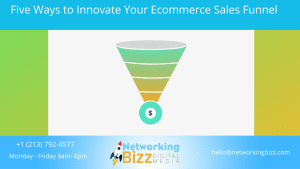With the end of this strange and challenging year fast approaching, it’s vital to bring your brand online to capture holiday demand. So what’s the best way to take advantage of Google Ads?
The following campaign types are just a few of the strategies Google Ads offers that make it easier for potential customers to find your products and business details in their exact moments of need or inspiration – or let them complete their purchase with you right on Google. You can run all three at the same time, or just focus on one, in which case we recommend starting with Shopping ads.
1. Find your next customer with Shopping ads.
 75% of shoppers surveyed say that in the last week they’ve used a Google product in the past week to help with their shopping. Google Shopping ads help merchants to reach these shoppers across YouTube, Gmail, Search and the Google Display Network. Shopping ads feature an image of your product, plus a name, price, brand, and more. More descriptive ads give buyers a strong sense of your products and produce better sales leads.
75% of shoppers surveyed say that in the last week they’ve used a Google product in the past week to help with their shopping. Google Shopping ads help merchants to reach these shoppers across YouTube, Gmail, Search and the Google Display Network. Shopping ads feature an image of your product, plus a name, price, brand, and more. More descriptive ads give buyers a strong sense of your products and produce better sales leads.
Your business might also qualify for free listings on Google, which give your products additional exposure at no extra cost. According to internal Google data, both ads and free listings on the Shopping tab have produced a 50+ percent increase in clicks and a 100+ percent increase in impressions on average, with small- to medium-sized merchants seeing the largest share of these increases.
Before you create Shopping ads, you’ll need to assemble a product feed in Google Merchant Center: that’s a list of products to advertise, with relevant info and images for each one.
A useful variation on this is the Smart Shopping campaign. This kind of campaign combines your existing product feed with Google’s machine learning, letting the system test different combinations of the image and text you provide until it finds the most successful variations. To help you get the best value from each ad, Google also automates ad placement and adjustments to reach your best customers and get the best results.
2. Get discovered with Search campaigns.
 With Google Search campaigns, your ads show up alongside search results when people are looking for the products or services you offer. Running ads can supplement your normal listings on the search results page and boost your visibility.
With Google Search campaigns, your ads show up alongside search results when people are looking for the products or services you offer. Running ads can supplement your normal listings on the search results page and boost your visibility.
Search campaigns are targeted to the actions you’d like customers to take, whether that’s clicking a link or making a purchase, and aimed at specific marketing goals. This goal should reflect whatever you’re trying to achieve – leads, sales, web traffic and so on. In addition, each campaign has settings options like location, devices, and language, which let you filter your intended audience. You’ll also need to set your budget and a bid strategy.
After choosing your settings, you can create ad groups. These are bundles of keywords, related to important search terms, as well as the ads that they will trigger. For example, you might choose keywords like T-shirt, sweatshirt, hoodie as one ad group for your clothing company, while shoes, sneakers, boots could be another. Once you’ve established your keyword groupings, you can build tailored ads that reflect the theme of each ad group.
3. Introduce your brand during normal daily activities.
 Most shoppers are constantly on the lookout for new ideas or discoveries. And they tend to act fast when they find one. In fact, when they encounter a product that meets their needs, 85% of online consumers will take action on it within 24 hours.
Most shoppers are constantly on the lookout for new ideas or discoveries. And they tend to act fast when they find one. In fact, when they encounter a product that meets their needs, 85% of online consumers will take action on it within 24 hours.
But where do these discoveries happen? Often in a customer’s everyday environment, especially on their favorite feeds like YouTube watch lists, the Gmail promotions tab, and Google Discover itself, a news and information service used by millions. Ads in such locations can tap into a customer’s purchase intentions without the need for a deliberate search query, so they work great alongside Search and Shopping campaigns, helping to inspire new audiences to find your products.
Discovery campaigns have similar settings to Search and Shopping ads, including a primary marketing goal and your target audiences. You can let Google help you build strong campaigns by providing creative assets that it transforms into native ads.
Always use your highest quality images – for example, those that have already performed well on social media – and if you can, provide a good range of pictures, descriptions, and headlines to cover all your bases. Once again, machine learning is your friend: the system will experiment with different combinations to find the ads that get the best outcome.

